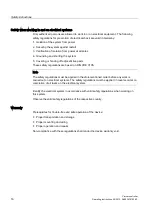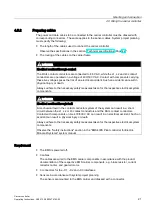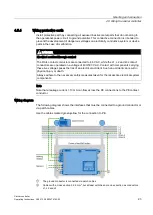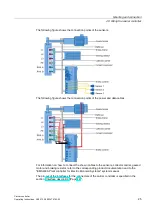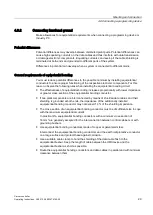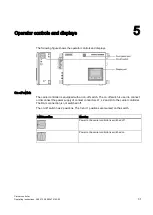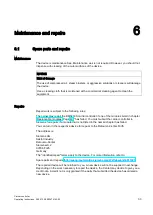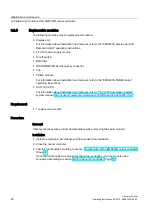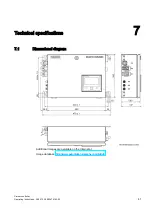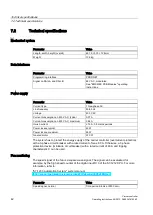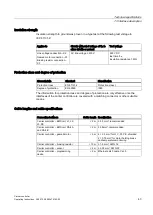
Mounting and connection
4.6 Connecting a programming device
Carrier controller
Operating Instructions, 09/2013, A5E03474162-02
29
4.6.2
Connecting functional ground
Make allowances for equipotential requirements when connecting a programming device or
Industry PC.
Potential differences
Potential differences may develop between distributed plant parts. Potential differences can
cause high equalizing currents on the data cables and thus interfere with data transmission
or damage electronic components. Equalizing currents can develop if the cable shielding is
terminated at both ends and grounded to different parts of the system.
Differences in potential can develop when a system is connected to different mains.
General requirements of equipotential bonding
You must reduce potential differences to the possible minimum by installing equipotential
conductors to ensure proper functioning of the respective electronic components. For this
reason, observe the following rules when installing the equipotential bonding circuit:
●
The effectiveness of equipotential bonding increases proportionally with lower impedance
or greater cross-section of the equipotential bonding conductor.
●
If two plant components are interconnected by means of shielded data cables and their
shielding is grounded at both ends, the impedance of the additionally installed
equipotential bonding conductor may not exceed 10 % of the shielding impedance.
●
The cross-section of an equipotential bonding conductor must be of sufficient size to cope
with the maximum equipotential current.
In practical life, equipotential bonding conductors with a minimum cross-section of
16 mm² are generally accepted for the interconnection between control cabinets or with
grounding busbars.
●
Use equipotential bonding conductors made of copper or galvanized steel.
Interconnect the equipotential bonding conductors and the earth rod/protective conductor
on a large surface and protect these against corrosion.
●
Use a suitable cable clamp to bond the shielding of the data cable flush to the
equipotential busbar. Keep the length of cable between the HMI device and the
equipotential busbar as short as possible.
●
Route the equipotential bonding conductors and data cables in parallel and with minimum
clearance between them.


